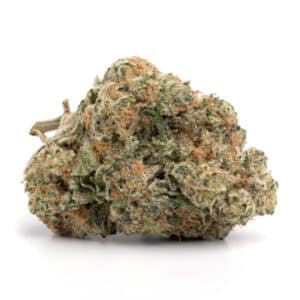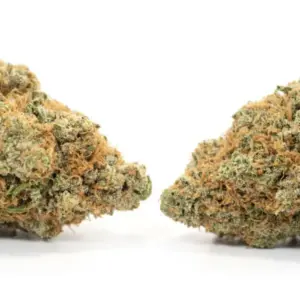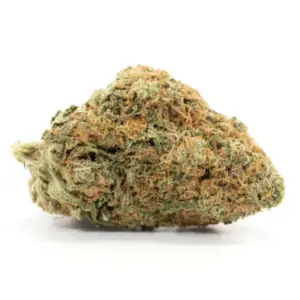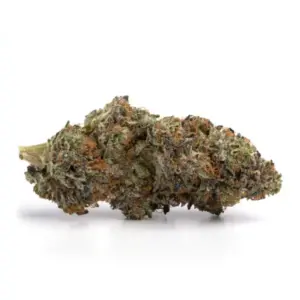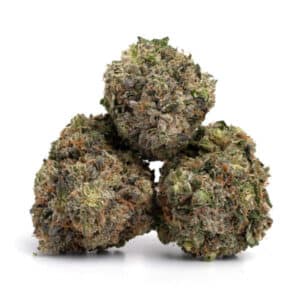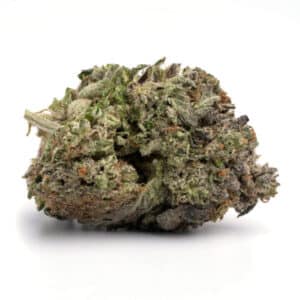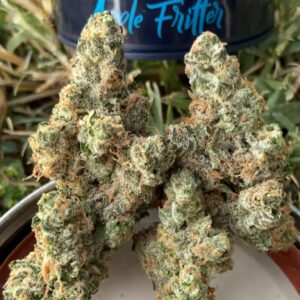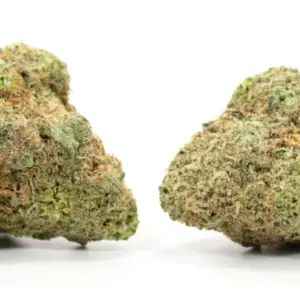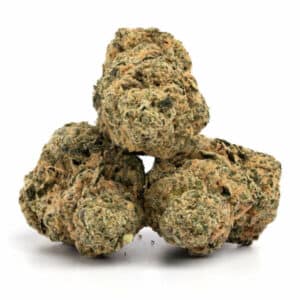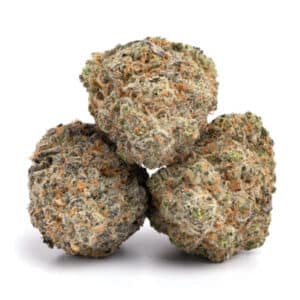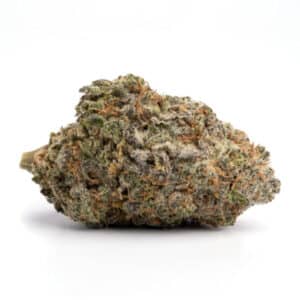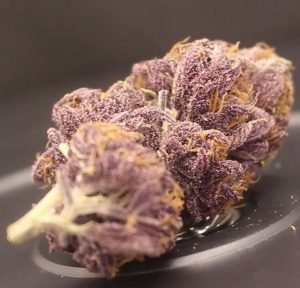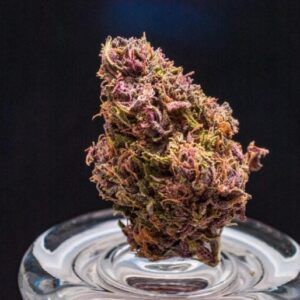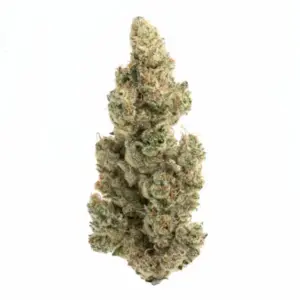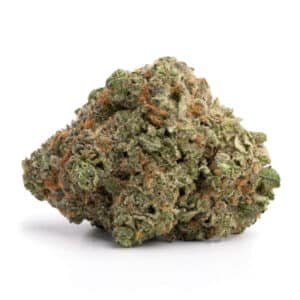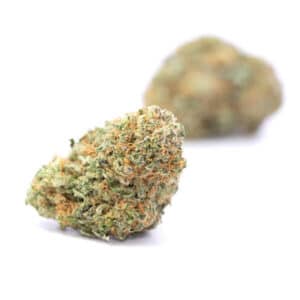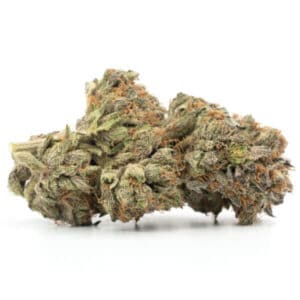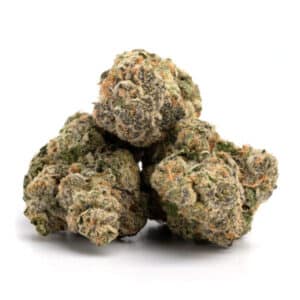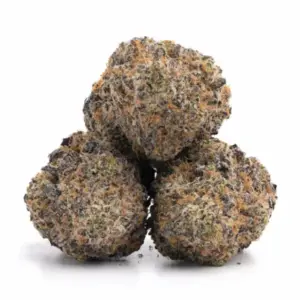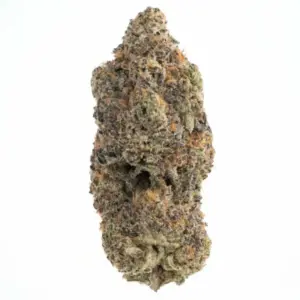Product
Categories
FILTER BY PRICE
-
Sale!
 0 out of 5
0 out of 5QP of Weed
0 out of 5$600.00Original price was: $600.00.$500.00Current price is: $500.00. Select options -
Sale!0 out of 5
Half Pound of Weed
0 out of 5$900.00Original price was: $900.00.$800.00Current price is: $800.00. Select options -
Sale!0 out of 5
Pound of Weed
0 out of 5$1,500.00Original price was: $1,500.00.$1,300.00Current price is: $1,300.00. Select options
Weed Strains
Weed Strains, sometimes called cannabis Strains or Marijuana Strains, have been around for thousands of years. Cannabis is available in a wide range of strains, each with unique effects and properties. With marijuana legalization spreading, varieties are proliferating rapidly.
Showing 1–30 of 91 results
-
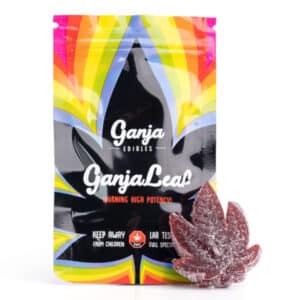 0 out of 5
0 out of 51000mg Sour Black Cherry Ganja Leaf (Ganja Edibles)
0 out of 5$39.00 -
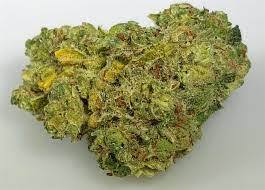 0 out of 5
0 out of 524k Strain
0 out of 5$300.00 – $1,300.00 This product has multiple variants. The options may be chosen on the product page -
 0 out of 5
0 out of 53 kings Strain
0 out of 5$300.00 -
Acapulco Gold Strain
0 out of 5$300.00 – $1,300.00 This product has multiple variants. The options may be chosen on the product page -
0 out of 5
Agent Orange Strain
0 out of 5$300.00 – $1,300.00 This product has multiple variants. The options may be chosen on the product page -
0 out of 5
Alaskan Thunder Fuck Strain
0 out of 5$300.00 – $1,300.00 This product has multiple variants. The options may be chosen on the product page -
Alien Kush Strain Sale
0 out of 5$300.00 – $1,300.00 This product has multiple variants. The options may be chosen on the product page -
0 out of 5
Apple Fritter Strain
0 out of 5$250.00 -
0 out of 5
Banana Kush Strain
0 out of 5$300.00 – $1,300.00 This product has multiple variants. The options may be chosen on the product page -
0 out of 5
Berry White Strain
0 out of 5$300.00 – $1,300.00 This product has multiple variants. The options may be chosen on the product page -
0 out of 5
Biscotti Strain
0 out of 5$250.00 -
Blue Cheese Strain for Sale
0 out of 5$300.00 – $1,300.00 This product has multiple variants. The options may be chosen on the product page -
Blue Dream Strain
0 out of 5$300.00 – $1,300.00 This product has multiple variants. The options may be chosen on the product page -
0 out of 5
Blue Zkittlez Pre-Rolls (Top Shelf)
0 out of 5$30.00 -
0 out of 5
Blueberry Muffin Strain
0 out of 5$250.00 -
Blueberry Strain for Sale
0 out of 5$300.00 – $1,300.00 This product has multiple variants. The options may be chosen on the product page -
0 out of 5
Bruce Banner Marijuana Strain
0 out of 5$300.00 – $1,300.00 This product has multiple variants. The options may be chosen on the product page -
0 out of 5
Bruce Banner Pre-Rolls (Top Shelf)
0 out of 5$30.00 -
Bubba Kush strain for Sale
0 out of 5$300.00 – $1,300.00 This product has multiple variants. The options may be chosen on the product page -
0 out of 5
Bubble Gum Strain
0 out of 5$300.00 – $1,300.00 This product has multiple variants. The options may be chosen on the product page -
Cannatonic Strain for Sale
0 out of 5$290.00 – $1,250.00 This product has multiple variants. The options may be chosen on the product page -
0 out of 5
Caramel Moon Rocks (Moonrock Canada)
0 out of 5$40.00 -
Chemdawg Strain for Sale
0 out of 5$300.00 – $1,300.00 This product has multiple variants. The options may be chosen on the product page -
Cherry Pie Strain for Sale
0 out of 5$300.00 – $1,300.00 This product has multiple variants. The options may be chosen on the product page -
Cinderella 99 Strain
0 out of 5$300.00 – $1,300.00 This product has multiple variants. The options may be chosen on the product page -
0 out of 5
Death Bubba Pre-Rolls (Top Shelf)
0 out of 5$30.00 -
0 out of 5
Death Bubba Pre-Rolls (Top Shelf)
0 out of 5$30.00 -
Death Star Strain
0 out of 5$300.00 – $1,300.00 This product has multiple variants. The options may be chosen on the product page -
Do-Si-Dos Strain
0 out of 5$300.00 – $1,300.00 This product has multiple variants. The options may be chosen on the product page -
0 out of 5
Fire OG Strain
0 out of 5$300.00 – $1,300.00 This product has multiple variants. The options may be chosen on the product page
Weed Strains: Exploring Cannabis Varieties
Cannabis is available in a wide range of strains, each with unique effects and properties. With marijuana legalization spreading, varieties of weed strains are proliferating rapidly.
Key Takeaways
- Cannabis strains are cultivars or varieties of the cannabis plant, each with distinct genetic profiles influencing their effects, aromas, and growing characteristics.
- The three primary types of weed strains are Sativa, Indica, and Hybrid, with numerous subcategories and unique strains within each.
- Factors like cannabinoid (THC and CBD) and terpene profiles play a crucial role in determining a strain’s specific effects and therapeutic potential.
- Selecting the right strain involves understanding your desired effects, growing conditions, and preferences for flavors and aromas.
- Reputable seed banks and dispensaries lab-test their strains and provide detailed information to help you make an informed choice.
Cannabis cultivation has evolved from rudimentary practices to an art form, with growers meticulously developing new strains to cater to diverse consumer needs. As the legal cannabis industry continues to flourish, understanding weed strains has become essential for both recreational and medicinal users alike. This comprehensive guide delves into the world of cannabis strains, exploring their origins, characteristics, and effects, empowering you to make informed choices tailored to your preferences.
Understanding Weed Strains: A Historical Perspective
The cannabis plant’s journey from its ancestral landrace strains to the dazzling array of modern hybrids is a tale of human ingenuity and selective breeding. Ancient civilizations like the Chinese, Indians, and Egyptians cultivated cannabis for various purposes, including medicinal, spiritual, and industrial applications.
Over time, these landrace strains adapted to their unique environments, developing distinct traits. As cannabis cultivation spread across the globe, growers began selectively breeding plants to enhance desired characteristics, eventually leading to the development of the three primary strain categories we know today: Sativa, Indica, and Hybrid.
Sativa Strains
Originating from the equatorial regions of Colombia, Mexico, Thailand, and Southeast Asia, Sativa strains are renowned for their uplifting, cerebral effects. These tall, slender plants with long internodal spacing and narrow leaves thrive in warm, sunny climates with longer growing seasons.
Sativa strains are often praised for their energizing, creative, and euphoric qualities, making them popular choices for daytime use or activities that require focus and concentration. Some well-known Sativa-dominant strains include:
- Sour Diesel
- Green Crack
- Super Lemon Haze
- Jack Herer
- Durban Poison
Example of Sativa Marijuana Strain
A perennial favorite is Super Lemon Haze, a sativa-dominant hybrid of Lemon Skunk and Super Silver Haze. This multi-award-winning strain imparts focused energy and an invigorating head high. THC levels approaching 20% produce euphoric happiness and stress-free creativity. The zesty citrus flavor provides a tangy, sweet taste. Super Lemon Haze’s soaring high makes it great for daytime use.
Indica Strains
In contrast, Indica strains originate from the Hindu Kush mountain ranges of Afghanistan, Pakistan, and India. These short, bushy plants with broad leaves and dense bud structures are better suited for cooler, harsher climates with shorter growing seasons.
Indica strains are celebrated for their relaxing, sedative effects, often described as a full-body “couch-lock” sensation. They are commonly used for relieving stress, anxiety, and promoting sleep. Popular Indica-dominant strains include:
- Afghan Kush
- Granddaddy Purple
- Northern Lights
- Hindu Kush
- Bubba Kush
Example of Indica Marijuana Strain
One of the most renowned indica strains is Northern Lights, a pure indica. Its fast-acting sedation makes it ideal for patients treating severe pain, anxiety, insomnia, or lack of appetite. The psychoactive high creates a dreamy, munchies-driven haze. Growers adore Northern Lights for its resilience, high yield, and crystal-covered buds. This versatile strain provides deep relaxation without total immobilization.
The Rise of Hybrid Strains
As cannabis cultivation became more widespread and sophisticated, breeders began experimenting with cross-breeding Sativa and Indica strains to create hybrid varieties. These hybrids combine the desirable traits of their parent strains, offering a diverse range of effects, flavors, and growing characteristics.
Hybrid strains can lean more towards Sativa or Indica characteristics, depending on their genetic makeup. Some popular hybrid strains include:
- Blue Dream (Sativa-dominant)
- OG Kush (Indica-dominant)
- Girl Scout Cookies (Balanced Hybrid)
- Gelato (Indica-dominant)
- Pineapple Express (Sativa-dominant)
Example of Hybrid Marijuana Strain
A favorite balanced hybrid is Pineapple Express, crossing a Trainwreck sativa with a Hawaiian indica. This fruity strain provides a happy, euphoric buzz complemented by deep relaxation. An energizing head high inspires creativity and socialization while a mellow body high relieves aches and tension. Pineapple Express exhibits the best of both sativa and indica effects.
Exploring Weed Strain Characteristics
While the Sativa, Indica, and Hybrid classifications provide a general framework, modern cannabis strains are far more complex, with unique genetic profiles that influence their effects, aromas, and growing traits. To truly understand a strain, it’s essential to delve into its chemical composition and physical characteristics.
Cannabinoid Profiles
Cannabinoids are the primary compounds found in cannabis, with tetrahydrocannabinol (THC) and cannabidiol (CBD) being the most well-known. These compounds interact with the body’s endocannabinoid system, producing a wide range of effects.
THC is the primary psychoactive compound responsible for the euphoric “high” associated with cannabis consumption. However, different strains can have varying levels of THC, influencing the intensity of their effects.
CBD, on the other hand, is non-psychoactive and is renowned for its potential therapeutic benefits, including reducing anxiety, inflammation, and pain. Some strains are bred specifically to produce higher levels of CBD, making them popular choices for medicinal users.
Terpene Profiles
Terpenes are aromatic compounds found in cannabis (and many other plants) that contribute to the distinct flavors and aromas of different strains. They also play a role in modulating the effects of cannabinoids through a phenomenon known as the “entourage effect.”
Common terpenes found in cannabis include:
- Myrcene (earthy, musky aroma; sedative effects)
- Limonene (citrusy aroma; uplifting, energizing effects)
- Pinene (pine-like aroma; bronchodilator properties)
- Linalool (floral, spicy aroma; potential anti-anxiety effects)
- Caryophyllene (peppery, spicy aroma; potential anti-inflammatory effects)
By understanding the interplay between cannabinoids and terpenes, consumers can better select strains that align with their desired effects and preferences.
Physical Characteristics
Beyond their chemical compositions, weed strains also exhibit distinct physical traits that can influence their growing patterns, yields, and overall cultivation experiences. These characteristics include:
- Plant structure (height, branching, internode spacing)
- Leaf shape and size
- Bud density and structure
- Flowering time and yield potential
- Resistance to pests, diseases, and environmental stressors
Experienced growers often consider these physical attributes when selecting strains, ensuring they can provide optimal growing conditions and achieve desired results.
Medical Uses and Benefits of Cannabis Strains
Marijuana as a medicine has scientifically backed medical benefits. Marijuana’s healing properties have been utilized for centuries.
While studies are still limited due to federal prohibition, medical cannabis is known to effectively treat symptoms of conditions like:
- Chronic pain
- Muscle spasms
- Nausea and vomiting
- Appetite loss
- Anxiety and PTSD
- Insomnia
- Alzheimer’s
- Epilepsy
- Parkinson’s
- Multiple sclerosis
- Cancer
The specific strains that are best for treating medical conditions depend on an individual’s needs. Indica strains tend to work well for pain, muscle spasms, nausea, appetite issues, and sleep disorders. Sativas can improve depression, fatigue, and mood disorders.
For example, an indica like Bubba Kush that induces deep relaxation can calm chronic pain and insomnia. A sativa such as Super Lemon Haze may relieve depression with an uplifting sense of focus and contentment.
Patients should experiment under medical guidance to find the most effective strains and proper dosages for their conditions. Vaping or edibles may offer better symptom relief than smoking for some patients.
Growing Cannabis Strains
Certain strains grow best indoors or outdoors in specific conditions. Here are top strain considerations for cannabis cultivation:
- Indica/Sativa Breakdown – Indicas prefer cooler climates and perform well indoors. Sativas thrive in warm equatorial climates outdoors. Hybrids can flourish indoors or outdoors depending on their genetics.
- Flowering Time – Indoor flowering of 8-10 weeks is typical, but certain strains require longer periods up to 14 weeks for full flowering and bud development.
- Yield Size – Some strains produce much larger yields than others. High yield strains like White Widow and Amnesia typically generate heavier harvests.
- Difficulty Level – The best strains for novice growers are resilient, moderately easy to grow varieties like Northern Lights, Blue Dream, and AK-47.
- Climate Conditions – Factor in conditions like humidity, day length, and average temperatures in your growing region. Pick suitable strains that will thrive.
- Pest and Mold Resistance – Choosing mold and pest-resistant strains will require less maintenance and protect your crop. Options like Skunk #1, White Rhino, and Durban Poison have higher resilience.
Seeking out high yield, fast flowering strains suited to your specific indoor or outdoor set up will help maximize success and return from growing cannabis strains.
Spotting Quality Cannabis
With so many sources now offering cannabis, determining quality products can pose a challenge. These tips identify signs of premium quality marijuana:
- Vibrant green buds – Brownish or dull-colored bud indicates low quality.
- Visible trichomes – More trichomes equal higher potency potential.
- Sticky feel – Properly cured buds should be slightly sticky or tacky.
- Strong odor – Top shelf strains boast a robust, appealing smell.
- Recent packaging dates – Old product loses potency and risks mold.
- Labels with grower/strain info – Legitimate products provide product details.
- Lab-tested cannabis – Reputable brands test for purity and potency.
- No seeds – High-grade buds do not contain seeds, which can create a harsh smoke.
- Minimal stems and leaves – Well-manicured buds have mostly flowers with few leaves or stems.
Inspecting cannabis closely and buying lab-tested products from licensed growers are smart ways to secure quality weed.
Strain Selection: Finding Your Perfect Match
With hundreds of weed strains available, selecting the right one can be daunting. However, by considering your desired effects, preferences, and growing conditions, you can narrow down your choices and find the perfect strain for your needs.
Desired Effects
Are you seeking an energizing, uplifting experience or a more relaxing, sedative effect? Different strains can produce varying levels of cerebral or body sensations, making it essential to understand their typical effects.
Sativa-dominant strains are often recommended for daytime use, as they can promote focus, creativity, and euphoria. In contrast, Indica-dominant strains are better suited for evening or nighttime consumption, offering relaxation and potential relief from insomnia, pain, or anxiety.
Hybrid strains can provide a balance of effects, combining the best of both worlds. Sativa-dominant hybrids may offer a more balanced cerebral and body high, while Indica-dominant hybrids can provide relaxation with a milder couch-lock sensation.
Flavor and Aroma Preferences
One of the joys of cannabis is experiencing the diverse flavors and aromas offered by different strains. From fruity and citrusy notes to earthy and pine-like scents, each strain’s terpene profile contributes to its unique bouquet.
When selecting a strain, consider what flavors and aromas appeal to you most. Are you drawn to the sweet, tropical notes of strains like Pineapple Express or Tangie, or do you prefer the earthy, diesel-like aromas of strains like OG Kush or Sour Diesel?
Exploring strain reviews and descriptions can help you identify those that align with your preferences, enhancing your overall experience.
Growing Conditions
If you’re a cultivator, selecting the right strain becomes even more critical, as different varieties have varying growing requirements and characteristics. Factors like climate, available space, and your experience level can influence your strain choice.
For example, Sativa strains tend to grow taller and require more vertical space, while Indica strains are shorter and bushier, making them better suited for indoor or compact growing setups. Additionally, some strains are more resistant to pests, diseases, or environmental stressors, making them easier to cultivate for beginners.
By considering your growing conditions and experience level, you can choose strains that will thrive in your setup, maximizing your yields and minimizing potential challenges.
Reputable Sources and Information
When exploring weed strains, it’s essential to rely on reputable sources that provide accurate, lab-tested information. Trusted seed banks, dispensaries, and online platforms often offer detailed strain profiles, including cannabinoid and terpene breakdowns, expected effects, and growing characteristics.
Furthermore, engaging with knowledgeable budtenders or experienced growers can provide invaluable insights and recommendations based on your specific needs and preferences.
Signs that your Strain could be losing its value
If you keep it correctly, the weed you purchase will likely last for a considerable time. It would prove beneficial if you bought the best high-quality Marijuana. However, regardless of how long you keep it, it’s still a living thing. This means that it will begin to lose its original beauty with time. Here are a few warning indicators to know when this happens:
Discoloration
The ideal Marijuana will consist of bright colors like orange, purple or green. When in combination or on their own, these colors indicate healthy marijuana plants. If you’re experiencing a decline in your health, the color may change to dull brown or khaki-green.
An earthy flavor
Every marijuana user will be sure that Marijuana has a slightly earthy flavor. It’s not necessary to fill your mouth with the plant. It’s usually easy to spot. But, if your cannabis tastes more earthy than usual, it’s possible to be cautious. It is typically a sign that the plant has been sat on your store shelves and is insufficient in the bongs.
Smell
Every living thing emits the most unpleasant smell once they die and begin to decay. When your cannabis is dying and losing quality, it will likely release an unpleasant odor. It can be made worse by keeping the plant in a tightly sealed jar with no adequate airflow.
User Experiences with Popular Weed Strains
To better understand the diverse experiences offered by different weed strains, let’s explore some real-life accounts from cannabis enthusiasts:
“Blue Dream is my go-to strain for creative projects or social gatherings. It provides a perfect balance of energizing, uplifting effects without being too overwhelming. The sweet, fruity aroma is an added bonus.” – Sarah, graphic designer
“When I need a full-body relaxation session after a long day, nothing beats the couch-lock effects of Granddaddy Purple. Its potent sedative qualities help me unwind and drift off to a peaceful sleep.” – Mike, construction worker
“As someone with chronic pain, I’ve found immense relief in strains like Cannatonic and ACDC. Their high CBD content helps alleviate discomfort without the overwhelming psychoactive effects of THC.” – Emily, medical cannabis patient
“For outdoor adventures or physically demanding activities, Sour Diesel is my strain of choice. Its energizing and focus-enhancing properties keep me alert and motivated, while the citrusy aroma is refreshing.” – Alex, avid hiker
“As a novice grower, I’ve had great success with strains like Northern Lights and White Widow. They’re relatively hardy and resistant to common issues, making them forgiving for beginners like myself.” – David, home cultivator
These firsthand accounts highlight the diverse range of experiences and applications that different weed strains can offer, emphasizing the importance of selecting the right strain for your specific needs and preferences.
Frequently Asked Questions
1. Can different strains produce different highs?
Yes, absolutely. The specific combination of cannabinoids (primarily THC and CBD) and terpenes in each strain can produce varying psychoactive and physiological effects, leading to distinct “highs” or experiences.
2. Are there strains that don’t cause couch-lock or sedation?
Sativa-dominant strains, like Jack Herer, Green Crack, or Durban Poison, are known for their energizing and uplifting effects without the heavy sedation often associated with Indica strains. These strains are popular choices for daytime use or activities that require focus and productivity.
3. Are there strains that are better for medical purposes?
Strains with high CBD levels, such as Cannatonic, ACDC, or Harlequin, are commonly sought after for their potential therapeutic benefits without the intense psychoactive effects of THC. These strains are popular among medical cannabis patients seeking relief from conditions like chronic pain, anxiety, or inflammation.
4. How do I know which strain is right for me?
Considering your desired effects, flavor/aroma preferences, and growing conditions (if cultivating) can help you narrow down the ideal strain. Additionally, consulting with knowledgeable budtenders or experienced growers, and reading strain reviews can provide valuable insights.
5. Can strains affect different people differently?
Yes, individual biochemistry and tolerance levels can influence how different strains affect people. Factors like metabolism, endocannabinoid system sensitivity, and even expectations can contribute to varying experiences with the same strain.
6. Are there strains better suited for beginners?
Some strains, like Blue Dream or Northern Lights, are often recommended for beginners due to their balanced effects and relatively straightforward growing requirements. However, it’s still essential to start with lower dosages and gradually increase as needed.
7. Can strains lose their potency or effects over time?
Yes, improper storage conditions or age can degrade the potency and quality of cannabis strains. Proper curing, packaging, and storage techniques are crucial to preserving the desired effects and characteristics of strains.
8. Are there strains that produce more of a “body high” versus a “head high”?
Indica-dominant strains, like Granddaddy Purple or Hindu Kush, are known for producing more pronounced body effects, often described as a “couch-lock” or full-body relaxation. In contrast, Sativa-dominant strains tend to produce more cerebral or “head high” effects.
9. Can strains have different growing requirements?
Absolutely. Strains originating from different regions or with distinct genetic backgrounds can have varying preferences for factors like temperature, humidity, nutrient levels, and light exposure. Understanding a strain’s specific growing requirements is crucial for successful cultivation.
10. Are there strains better suited for specific medical conditions?
Research and anecdotal evidence suggest that certain strains may be better suited for specific medical conditions or symptoms. For example, strains high in CBD and low in THC are often recommended for conditions like epilepsy or anxiety, while strains with higher THC and specific terpene profiles may be more effective for pain relief or appetite stimulation.
Alternatives to Weed Strains
If you’re looking for something more potent, You can also try shatter or other cannabis concentrates, such as live resin, budder distillate, hash, etc. These cannabis products are generally significantly more potent than regular buds. The most effective method to consume concentrates is by using a dab-rig.
If you’re not looking to smoke, you can consume THC infused edibles and put a few drops or drops of marijuana oil on your tongue. You can also apply cosmetic products to your skin, such as lotions, creams, and sprays.
Conclusion
Exploring the world of weed strains is a fascinating journey that empowers cannabis enthusiasts and medical patients alike. By understanding the unique characteristics, effects, and growing requirements of different strains, you can make informed choices that align with your desired experiences and preferences.
Remember, reputable sources, lab-tested information, and engaging with knowledgeable professionals are key to navigating the vast array of cannabis strains available. With patience and exploration, you can unlock the full potential of this remarkable plant and find the perfect strain to elevate your cannabis journey.




